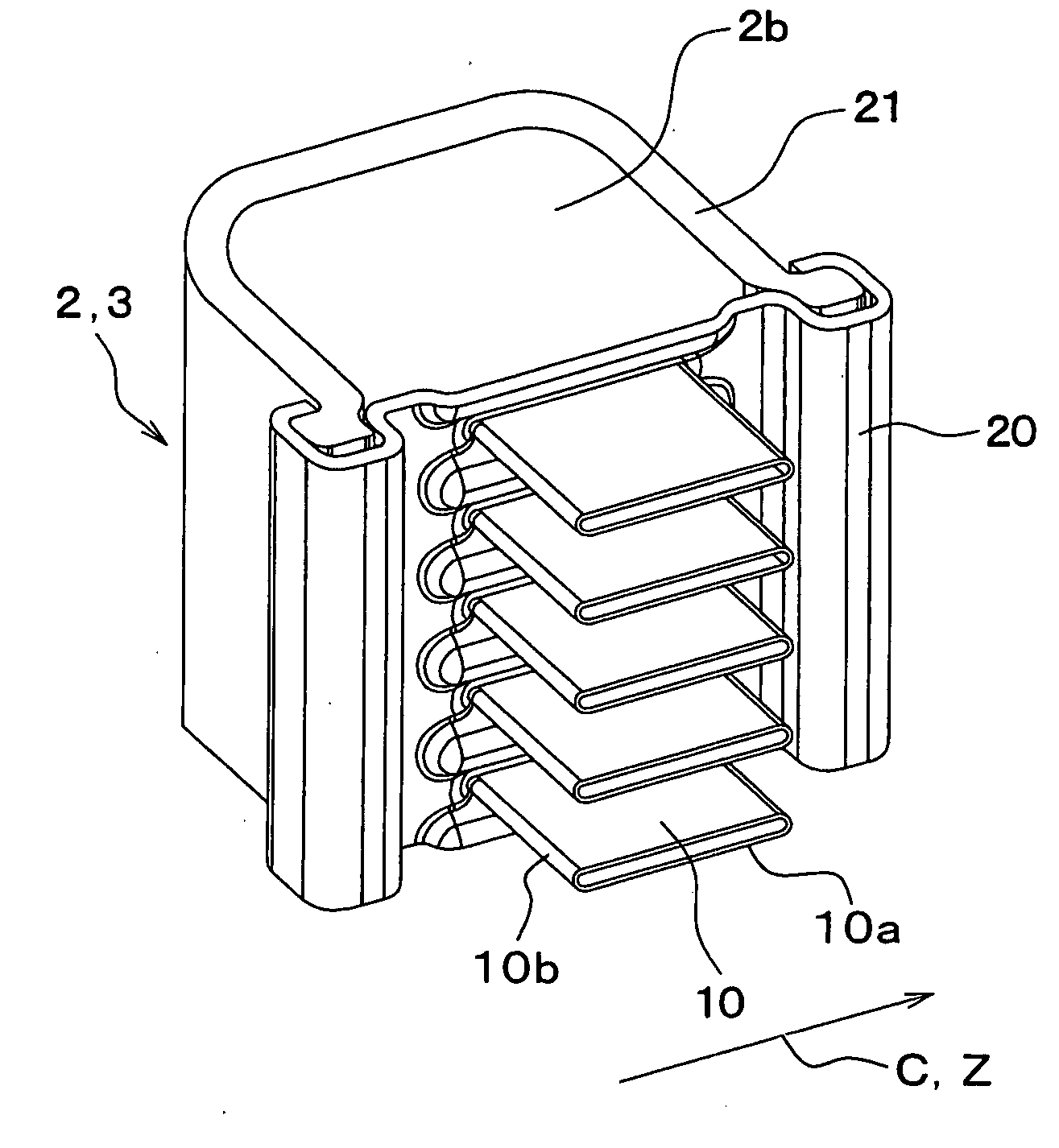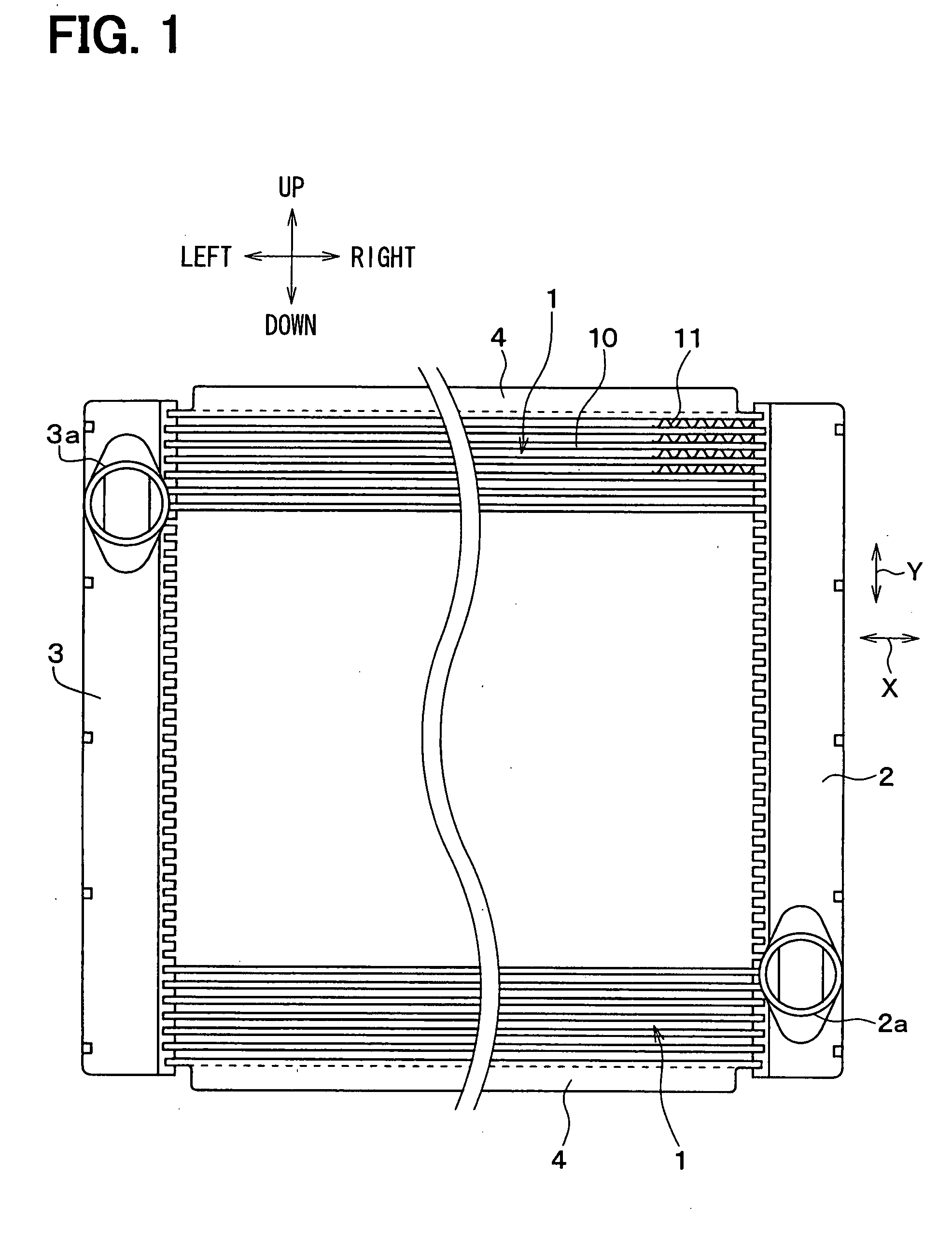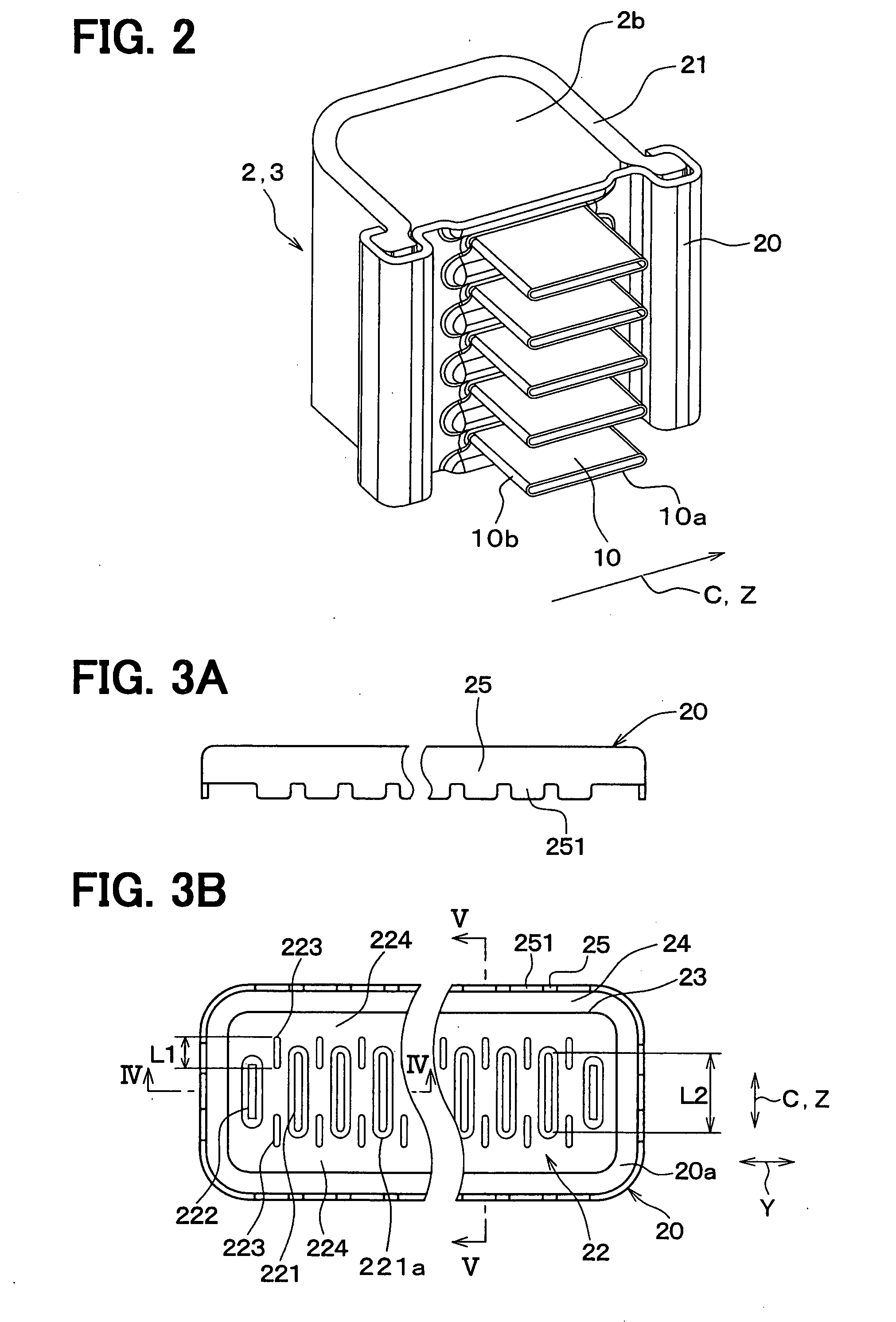Heat exchanger
a technology of heat exchanger and core plate, which is applied in the direction of lighting and heating apparatus, stationary conduit assemblies, reinforcement means, etc., can solve the problems of reduced formability of ribs and burring parts, high stress may be generated over the tubes in the tube width direction, etc., and achieve the effect of improving the formability of the core pla
- Summary
- Abstract
- Description
- Claims
- Application Information
AI Technical Summary
Benefits of technology
Problems solved by technology
Method used
Image
Examples
first embodiment
[0043]A heat exchanger according to a first embodiment of the invention can be used for a radiator, for example, for cooling a water-cooled internal combustion engine. As shown in FIG. 1, the heat exchanger includes a core part 1 having an approximately rectangular solid shape. The core part 1 includes a plurality of tubes 10 and a plurality of corrugate fins 11 which are alternately stacked in an up-down direction (tube stacking direction Y) in FIG. 1.
[0044]The corrugate fins 11 have corrugate shapes, and are made of an aluminum alloy, for example. The corrugate fins 11 are arranged for accelerating a heat exchange between air and cooling water (coolant). The tubes 10 define therein water passages through which cooling water for the water-cooled internal combustion engine (not shown) flows. For example, the tubes 10 are made of aluminum alloy plates, which are bent into predetermined shapes and weld or brazed, for example.
[0045]In the heat exchanger in FIG. 1, a longitudinal direct...
second embodiment
[0064]In the core plate 20 of FIG. 3B, each of the intermediate portions between the tube holes 221 and the insert holes 222 in the tube stacking direction Y is provided with the pair of the ribs 223. Alternatively, a part of the intermediate portions may be provided with the pair of the ribs 223. For example, first intermediate portions each of which is provided with the pair of the ribs 223 and second intermediate portions without any ribs 223 may be alternately arranged in the tube stacking direction Y, as shown in FIG. 6. In other words, the pair of the ribs 223 may be arranged alternately in the intermediate portions in the tube stacking direction Y.
[0065]Alternatively, one of the first intermediate portions provided with the pair of the ribs 223 and two of the second intermediate portions without any ribs 223 may be alternately arranged in the tube stacking direction Y. In other words, the pair of the ribs 223 may be arranged at one of every three adjacent intermediate portion...
third embodiment
[0066]In the core plate 20 of FIG. 3B, each of the intermediate portions between the tube holes 221 and the insert holes 222 in the tube stacking direction Y is provided with the pair of the ribs 223. Alternatively, each of the intermediate portions may be provided with one rib 223 at one end side of the tube holes 221 in the tube major direction Z. For example, one of third intermediate portions having one rib 223 on a first end side of the tube holes 221, and one of fourth intermediate portions having one rib 223 on a second end side of the tube holes 221 may be alternatively arranged, as shown in FIG. 7. Here, the first end side of the tube holes 221 is opposite to the second end side of the tube holes 221 in the tube major direction Z. Also in this case, the number of the ribs 223 is reduced, thereby the formability of the ribs 223 is improved compared with the case where the pair of the ribs 223 is arranged at each of intermediate portions.
PUM
 Login to View More
Login to View More Abstract
Description
Claims
Application Information
 Login to View More
Login to View More - R&D
- Intellectual Property
- Life Sciences
- Materials
- Tech Scout
- Unparalleled Data Quality
- Higher Quality Content
- 60% Fewer Hallucinations
Browse by: Latest US Patents, China's latest patents, Technical Efficacy Thesaurus, Application Domain, Technology Topic, Popular Technical Reports.
© 2025 PatSnap. All rights reserved.Legal|Privacy policy|Modern Slavery Act Transparency Statement|Sitemap|About US| Contact US: help@patsnap.com



